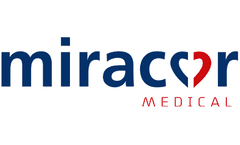Refine by
Coronary Arterial Articles & Analysis
25 articles found
One of MGP’s principal biological functions is the inhibition of hydroxyapatite deposition, the crystalline form of calcium phosphate found in bone. In soft tissues like arteries, unregulated hydroxyapatite accumulation leads to vascular calcification, a pathological condition associated with atherosclerosis, diabetes, chronic kidney disease (CKD), and aging. Studies in ...
These bands are used to guide and position catheters, stents, and guidewires during interventional procedures, such as angioplasty and coronary artery stent placement. By providing clear visibility under imaging, marker bands help medical professionals to accurately deploy devices in areas such as arteries or veins, ensuring successful outcomes. ...
In angioplasty procedures, medical rings play a crucial role in the accurate positioning of stents in obstructed coronary arteries. Their visibility during imaging allows for the precise expansion of stents at the site of blockage, thereby enhancing the restoration of blood flow and reducing the likelihood of restenosis. ...
In the dynamic landscape of modern medicine, technological advancements continuously reshape diagnostic and therapeutic approaches, fostering innovation and improving patient outcomes. Within this realm, the adoption of fluorinated ethylene propylene (FEP) and perfluoroalkoxy (PFA) tubing has emerged as a game-changer, revolutionizing various medical procedures across diverse specialties. Let's ...
With regard to ischaemic aetiology, HFmrEF more resembles HFrEF, but HFmrEF has a higher frequency of underlying coronary artery disease (CAD) and a better overall prognosis. Comorbidities While there are differences between the cellular and structural comorbidities of HFpEF and HFrEF, there are some similarities. ...
These include: Atrial fibrillation (Afib) Coronary artery disease Diabetes High blood pressure (hypertension) Obstructive sleep apnea (OSA) Obesity Chronic kidney disease Amyloidosis or other infiltrative heart diseases What are the symptoms of diastolic heart failure? ...
This complex case involved a patient with a flow-limiting lesion in a native coronary artery post bypass surgery. The new EluNIR stent system includes a stent with a low metal footprint which comprises struts of variable width: ultra-narrow struts having a width of 40µm and narrow supportive struts having a width of 72µm. The combination of different ...
ByMedinol
This complex case involved a patient with a flow-limiting lesion in a native coronary artery post bypass surgery. The new EluNIR stent system includes a stent with a low metal footprint that comprises struts of variable width: ultra-narrow struts having a width of 40µm and narrow supportive struts having a width of 72µm. The combination of different ...
ByMedinol
A cyclo-ergometer exercise test was performed on this 57-year old male patient. He is a smoker with a family background of CAD. He is suffering from left bundle branch block making ST-segment analysis impossible. The patient has achieved 78 % of max. heart rate at 120 watts. Moderate paleness and dyspnoea have been observed at the end of the 120 watts step. However, after a normal initial ...
Pathophysiology, treatment options and hot topics Improvements In Stemi Treatment The immediate and long-term prognosis of patients experiencing an ST segment elevation myocardial infarction (STEMI) has changed dramatically since the introduction of coronary reperfusion therapies during primary percutaneous coronary intervention (pPCI). ...
The ability to increase coronary flow is referred to as coronary flow reserve. Increased coronary flow is required for increased oxygen supply to the myocardium, as each molecule of hemoglobin that enters the coronary circulation delivers all the carried oxygen during its pass through the myocardium. Thus, only increased flow can ...
The device can be used for ruptured ectopic pregnancies, burst spleens and livers, coronary artery repairs, total hip replacements, abdominal aneurysms and myomectomies. ...
Periodontal disease is a potential risk factor for: Infective Endocarditis (damaged heart valves) Cardiovascular Diseases (Arteriosclerosis, Coronary thrombosis Ischemic heart disease, Stroke) Diabetes Respiratory Problems Pancreatic Cancer Behavioral and Psychosocial Status Not only is there an indirect link between periodontal infections and systemic disorders, but ...
Incomplete stent expansion and malapposed stent struts are a predictor of subacute and late stent thrombosis. Appropriate lesion preparation prior to stent implantation is necessary to assure complete stent expansion and stent strut apposition. This is of particular importance in challenging lesions, in particular those with calcific plaque. The goal of the pre-dilatation is to obtain optimal ...
ABILITY Diabetes Global (Randomized Comparison of Abluminus DES+ Sirolimus-Eluting Stents versus Everolimus-Eluting Stents in Coronary Artery Disease Patients with Diabetes Mellitus Global) started off with the index patient enrolment on 11th June 2020 in Italy (at the peak of the 1st wave of COVID-19 pandemic) by P.I. ...
Heart Attack A heart attack occurs when blood flow to the heart is blocked, typically because of a blood clot or plaque that built up in the arteries over time. Your heart muscle needs oxygen in order to function properly, so when blood flow is blocked, the heart muscle begins to die because of lack of oxygen. ...
Furthermore, scRNA-seq has allowed the creation of transcriptomic and epigenetic atlases of crucial tissues in adult mice and human fetuses, such as the heart and coronary arteries. Organ-specific or tissue-specific transcriptomic features of common cardiovascular cell types like endothelial cells, vascular smooth muscle cells (VSMCs), and fibroblasts can be ...
Consuming too many unhealthy fats (saturated and trans fats) can cause high cholesterol, which increases the chance of coronary artery disease. When cholesterol is too high, plaque can build up in the arteries—putting you at higher risk for heart attack and stroke. ...
Aim To investigate the association of high-risk CVD phenotype determined by coronary artery calcification (CAC) with liver fibrosis by MRE in patients with non-alcoholic fatty liver disease (NAFLD). ...
Your three main coronary arteries are responsible for bringing blood to the heart. When they start to become blocked, it can weaken the heart and eventually lead to a heart attack if the blockage isn't addressed and there isn't enough blood supply to the heart. On the left side of the heart, there are two coronary arteries ...
















